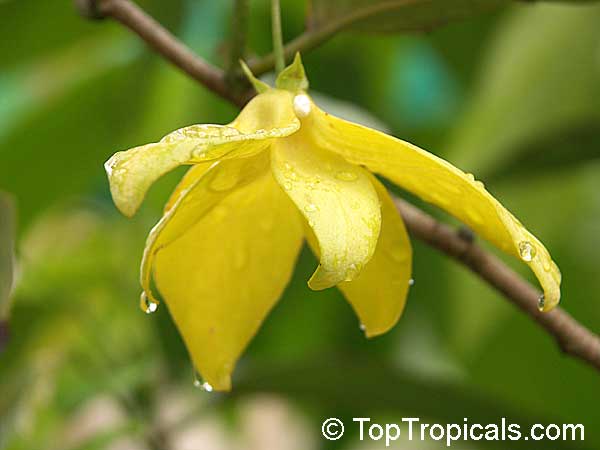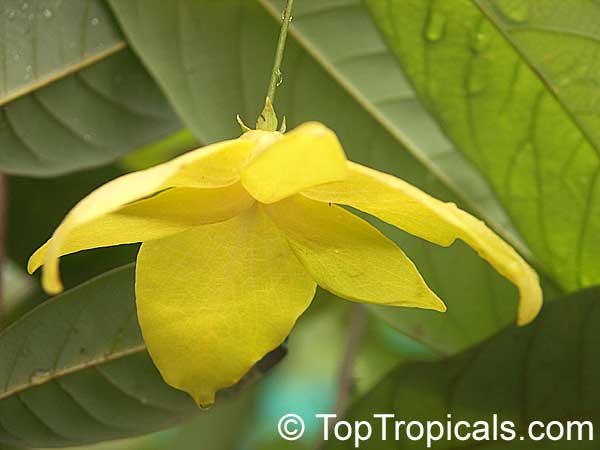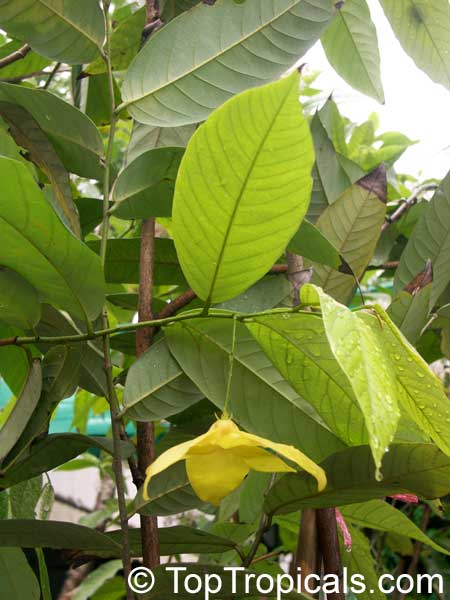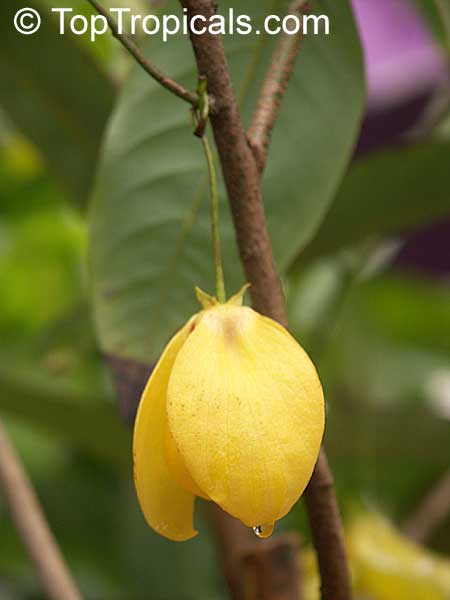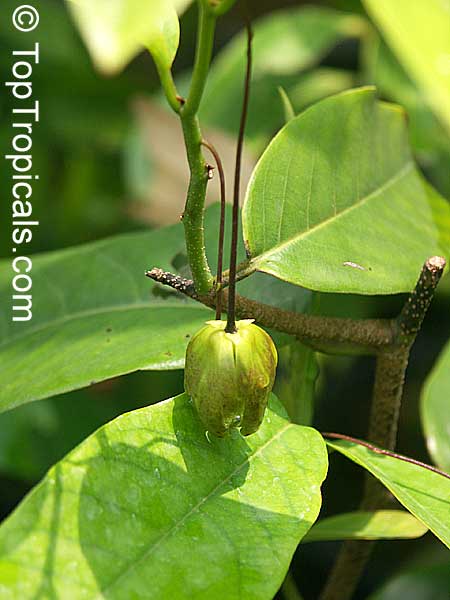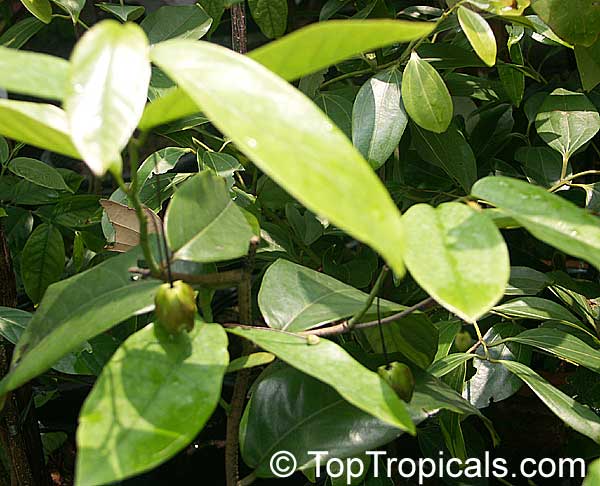Desmos cochinchinensis (Dwarf Ylang Ylang shrub)
Top Tropicals Plant Encyclopedia
Botanical name: Desmos cochinchinensis
Common name: Dwarf Ylang Ylang shrub
Family: Annonaceae
Origin: Asia








Desmos cochinchinensis is a large shrub native to Asia, growing 5-10ft tall with small clusters of yellow and orange flowers that have a strong yet fragrant scent. The flowers usually bloom in the springtime between April and July and when the petals fall off, they turn a rusty-red color. This plant can be grown in USDA Zones 9-11 and enjoys full sun or semi-shade with regular watering.
When growing Desmos cochinchinensis in cold regions, it's best to grow the plant in a pot in order to keep it safe from the cold weather. It can be brought indoors during the winter months and taken back outside when the temperatures warm. When planting, ensure the soil is well drained and mix it with compost or aged manure to give the plant access to the best minerals and nutrients it needs to thrive. The shrub also needs plenty of direct sunlight and regular water, so be sure to provide both in order to keep the soil throughout moist.
Desmos cochinchinensis is not only a beautiful sight to see with its burst of yellow and orange flowers, but it is also used as a folk medicine in China to treat malaria. This plant is a must-have for those who look for a fragrant and stunning addition to their garden.
